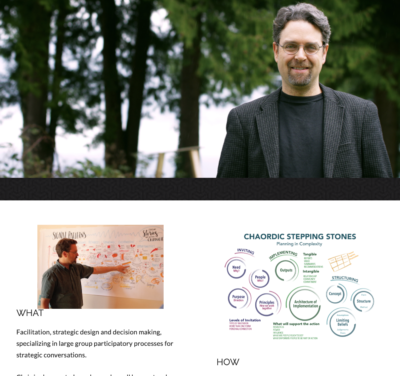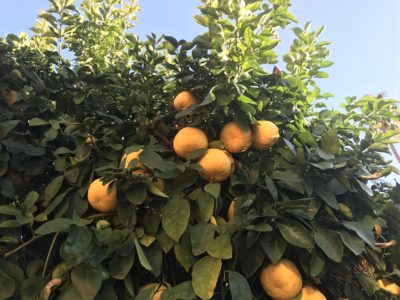
Meet Bessie. That’s her above (I’ve always thought of her as feminine). Beauty, right. She’s a 1999 Honda Accord, now with 231,ooo miles on her, all of them with me and family. I’m seriously grateful for a car that lasts (and knocking on wood now). My favorite line with my kids (who are a wee bit more oriented to replacing this car) is, “She comes from another century (and for that matter, “another millennium,” spoken with pride).” That, and, “Be good to Bessie and she will be good to you.”
I like road trips. I’ve been able to take many in my time. And many in Bessie. Pack the sandwiches. Some fruit. Snacks. Sunflower seeds. Water. Some Dr. Pepper. Ready go. It all reminds me of summer camping with my Grandparents when I was a young boy in Canada.
I like road trips for the open road, even when I’m solo. Lots of time to think out loud and be taken by landscapes. I like road trips with people. The car is a great container for some slow wandering together.
My most recent road trip was returning from California to Utah on Monday, two days ago. It was a full drive that turned out to be 12 hours, including one stop for food, traffic congestion, and a few snowy patches.
This most recent trip was with my sons, Isaac and Elijah. Isaac is 21. I love the way that he is growing further in his adult life. I see it in the way he creates shared space in the car. He asks about what to do — listen to a podcast, watch a movie (me listening), or just resting (him, not me as driver). He shares the driving also. Elijah is 13. He’s rather device-centered. Though it frustrates me to lose him too quickly to his downloaded programs on his phone, I would have totally done the same thing when I was his age if I had the technology.
I like to get circly with my sons on road trips. It’s not super serious. There are no bells. There is no visible center. There is not spoken out loud version of host or guardian. There is no reminder of agreements. It isn’t the place for it. But, I want to affirm that it is plenty circly. I love it. It’s a moment that I most look forward to.
It sounds a bit like this, as we drive:
“So, let’s each name three thing that we most appreciated about being in California with Gma and Gpa this time.” Sometimes I start. Usually, I wait for them. There is the slightest guiding that feels important — I make sure (and so do my sons) that we each speak. It sounds like, “How about you Elijah — what were your favorites.”
That’s the easy round. I want a bit more. And, truth be told, every bit of the circle components wheel are in play in my mind. I’m not really thinking about the specifics. There is definite circle intention going on.
“So, do you notice anything different in Gma and Gpa this time?” This question requires just a bit more thinking and noticing. I suppose that is mostly the point for me — I’m rather curious about what they are noticing (and in my inner world, reflecting a bit on what their noticing reveals — that sounds way more psychological than it sounds).
Again, without bells, center, etc., all of that is in play for me. It sounds different, as it should for this environment. “Hmm…, that’s interesting,” I’ll say. I’ll then speak honestly some of what I noticed. Into a center that I see, but haven’t named.
All of this lasts maybe 15 miles worth of driving. Sometimes 30. Not much in the 700 miles total from that day. Yet, it’s a super significant point of the trip for me. I want the shared attentiveness together. I want the shared thoughtful speaking together. As a Dad. And as a human interested in noticing things together.
Amanda Fenton and I just completed yesterday hosting another round of online classes for The Circle Way. Delightful people and participants. In the end, I often feel that in the space of four 2-hour Zoom based calls, we’ve created some noticeable connection. I often feel like what I most want for people is to “grok” more of circle and being circly. Yes to the formal teaching environments and culture building that is circle-based. Yes to the deliberateness of developing shared language and practice. That all really matters and I’m glad to be involved in a few places doing that.
But I’ve got to say, I love the moments of just simple being circly. It’s a bit sneaky, I suppose. But, let’s call it what it also is — it’s natural to listen to each others perspectives. It’s natural to learn from each other. With my sons, I don’t think of it as hiding anything. There is definitely no malice in being circly. I do think of the circly that I do with them as being a wise translator, and a wise bridge-builder, to bring them and us into a momentary circly space with one another. The experience (the circle) then does the rest. I’m guessing that these little reflective moments will come back to them later in life. I hope that they to grow instincts and practice to be circly.
Sometimes all you have is a question, “So…, what did you notice this time?” that gets us rounding. Sometimes, all you have is a car and few sandwiches. And I think all of the time, as it is with Bessie, “you be good to circle and circle will be good to you.”
Being circly.




